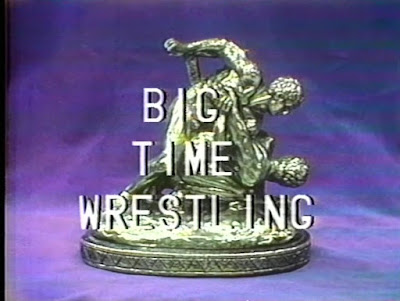Arguably the most popular wrestler in the Detroit, Michigan area in the early 1960s was Leaping Larry Chene--born Arthur Lawrence Beauchene on June 22, 1924 on Detroit's Eastside. He attended St. Bernard Catholic School where he played team sports. In the early 1940s, he took naval pre-flight training at the University of Iowa and the University of Michigan. Chene wrestled competitively in college before enlisting to fight in World War II.
After the war, Beauchene started a trucking business which involved long hours and marginal profits. In 1951, Detroit wrestling promoter Bert Ruby needed someone to fill in for one of his injured wrestlers and approached Beauchene knowing he had a wrestling background. Ruby offered him $27.50 for wrestling a thirty-minute bout. He wrestled under a shortened, Americanized version of his real name--Larry Chene. Years later, he was quoted as saying, "This was the easiest money I ever made."
Shortly after, Chene shut down his struggling trucking business and learned the secrets of the squared circle. Chene wrestled in small, local venues five or six times a week for different small promotions while he developed his craft. Then in 1953, he signed a six-week contract to wrestle in Texas. He liked the steady work and the money. Chene had a growing family to provide for, so he stayed for several years developing his high-flying, Leaping Larry Chene persona.
Chene was a spectacular aerial performer whose signature move was the flying head scissors. He was a likeable "good guy" who fans related to when he took a beating at the hands of an assortment of uncouth villains. Unlike his opponents, Chene was personable and bantered with the referees and the crowd. He was always quick with a smile and an autograph when he met the public.
John Squires
remembers back in the early 1960's "Dearborn High had a wrestling
night in the gym. Larry, the Sheik, Bobo, all were there. Larry got
thrown out of the ring and while he was laying in front of us, he
borrowed my friend's penny loafer (shoe) and stuck it in the back of his tights.
Chene jumped back in the ring and hit the Sheik in the forehead with it and
the Sheik started bleeding. Not sure if it was fake or not, but it sure
looked good."
 |
| Wrestling Promoter Bert Ruby |
Chene returned to Detroit in 1960 a seasoned professional wrestler. He signed a contract with old friend Bert Ruby, who was looking for a star to headline his new Motor City Wrestling (MCW) television program which aired Saturday afternoons on WXYZ-TV Channel 7. Chene was featured and quickly became a fan favorite. The television show was essentially an advertisement for Ruby's growing wrestling promotions which were now happening at larger venues like the Olympia arena and Detroit's new Cobo Hall Convention Center. Big money was being made.
During a live Saturday afternoon match on August 26, 1961 to promote an Olympia event, Chene wrestled La Bestia (The Beast)--The Sicilian Sheep Herder. The Beast caught Chene from behind with a bear hug and shook him up and down while squeezing. Chene uncharacteristicly cried out and The Beast dropped him on the mat. The referee stopped the match and the program cut to a commercial break.
The MCW doctor on hand called an ambulance and transported the injured wrestler to Riverside Hospital in Trenton, Michigan where he was diagnosed with a torn stomach muscle requiring surgery and a lengthy period of recuperation. To keep his name in the wrestling public's mind, Chene did the color commentary for MCW until his abodmen healed. Meanwhile, a grudge match with The Beast was heavily promoted for a month before it was scheduled.
In those days, the matches were three falls. The Beast won the first fall and Chene won the second. In a rage, The Beast threw Chene out of the ring. The Beast's manager, Martino Angelo, promptly attacked Chene on the concrete floor. When the referee wasn't able to restore order, he handed the split decision to Chene after disqualifying The Beast.
During his career, Chene won more matches than he lost, and he held many championship titles and belts during his thirteen-year tenure delighting fans. Early in the morning on October 2, 1964, Chene was returning home from a match in Davenport, Iowa when his car went off the shoulder of Interstate 80 and flipped over near Ottawa, Illinois. Initial reports indicated Chene's car hit a telephone pole but that was found to be false. Illinois State Police reported finding a speeding ticket for traveling 92 mph issued to Chene five hours before he was found dead in his car. He was almost forty years old.
On Tuesday, October 6, 1964, services were held for Arthur Lawrence Beauchene at St. David's Roman Catholic Church on E. Outer Drive in Detroit. Beauchene lived in Harper Woods with his wife Mary and their six children. His body is interred in Mt. Olivet Cemetery. Edward George Farhat, the original Sheik, paid for the funeral.








